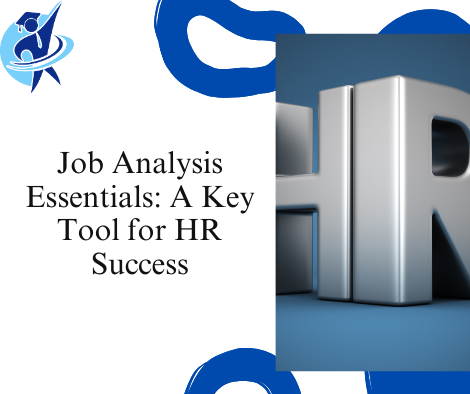Understanding Job Analysis: Job analysis is the process of gathering, documenting, and analyzing information about a job’s duties, responsibilities, and required skills. This foundational HR tool is critical for creating accurate job descriptions, identifying key competencies, and aligning roles with organizational goals. By clearly defining each job, HR professionals can ensure that the right people are hired, trained, and developed.
Components of Job Analysis:
- Job Description:
- Outlines the essential duties and responsibilities of the role.
- Provides a clear understanding of what the job entails, including tasks, work environment, and reporting relationships.
- Job Specifications:
- Lists the qualifications, skills, and experience required to perform the job effectively.
- Includes educational background, technical skills, soft skills, and any necessary certifications.
- Job Evaluation:
- Involves assessing the job’s value to the organization, determining its level, and establishing a fair compensation structure.
- Helps in ensuring internal equity and maintaining competitive pay practices.
Benefits of Job Analysis:
- Recruitment and Selection:
- Provides a solid foundation for developing job postings and selecting the right candidates.
- Ensures that the hiring process is aligned with the actual requirements of the job.
- Performance Management:
- Helps in setting clear performance expectations and measurable goals.
- Facilitates objective evaluations by providing a benchmark for assessing employee performance.
- Training and Development:
- Identifies skill gaps and training needs based on job requirements.
- Assists in designing targeted training programs that enhance employee competencies.
- Workforce Planning:
- Supports strategic workforce planning by identifying current and future job requirements.
- Helps in forecasting organizational needs and aligning talent with business goals.
- Compliance and Legal Protection:
- Ensures that job descriptions and specifications comply with labor laws and regulations.
- Provides a defense in case of disputes related to hiring, promotions, or terminations.
Steps in Conducting a Job Analysis:
- Data Collection:
- Gather information through methods such as interviews, questionnaires, observations, and employee feedback.
- Use existing documents like job descriptions, performance reviews, and organizational charts.
- Job Description Development:
- Create detailed job descriptions that accurately reflect the role’s responsibilities, tasks, and reporting structure.
- Ensure that the description is clear, concise, and easy to understand.
- Job Specification Formulation:
- Develop a list of the necessary qualifications, skills, and experience required for the job.
- Include both mandatory and desirable criteria to guide recruitment and training efforts.
- Job Evaluation and Classification:
- Assess the relative value of the job within the organization and determine its classification and pay grade.
- Ensure consistency across similar roles and align with industry standards.
Conclusion: Job analysis is an essential tool for HR professionals, providing the clarity and structure needed for effective talent management. By accurately defining roles and responsibilities, HR can improve recruitment, performance management, and employee development, ultimately contributing to organizational success.
Achieve HR excellence with certified training at Next Innovation Asia. Essential skills and career support in Chennai—enroll now!

